Day Nine, Saturday: Lake Powell; U.S. 89 to Kanab.
Clay and colleagues spend a glorious day on Lake Powell. A reservoir on the Colorado River, Lake Powell is a popular recreation destination hosting over 3 million visitors annually and is part of the Glen Canyon National Recreation Area. The reservoir, named for the explorer John Wesley Powell, has some 2,000 miles of shoreline, with countless beautiful side canyons. This dispatch is the 10th in a series from Clay chronicling his recent journey with two compatriots following the Colorado River and neighboring region exploring the state of water, or the absence of it, in the West.
I hosted my weekly online class in my hotel room while Dennis and Frank sought out coffee worthy of their palates.
As soon as my morning work was over, we hopped into the truck and drove to the Wahweap Marina west of Page, west of the dam. Randy Reed was waiting for us way down at lake level beyond the concrete, down where a floating quay permitted us to put our gear into his boat. I had never been on Lake Powell before. Frankly, I had no previous interest in getting on the reservoir behind Glen Canyon Dam. Everything I have read — from Cadillac Desert to Donald Worster’s Rivers of Empire made me at the very least wish that Glen Canyon with its grottos, exquisite slot canyons, hidden pools, and the Music Temple had never been inundated. But I know a fairly large number of people who rave about their vacations on the lake. I was eager now to see what the fuss is about. A work assignment!
Randy Reed owns and operates a Lake Powell excursion company. He’s somewhere in his late 50s or early 60s. He has lived at Lake Powell for most of his adult life. He agreed to take us to some places only accessible again now because of the huge drop in the level of Lake Powell and to provide his own perspective on the future of the reservoir.
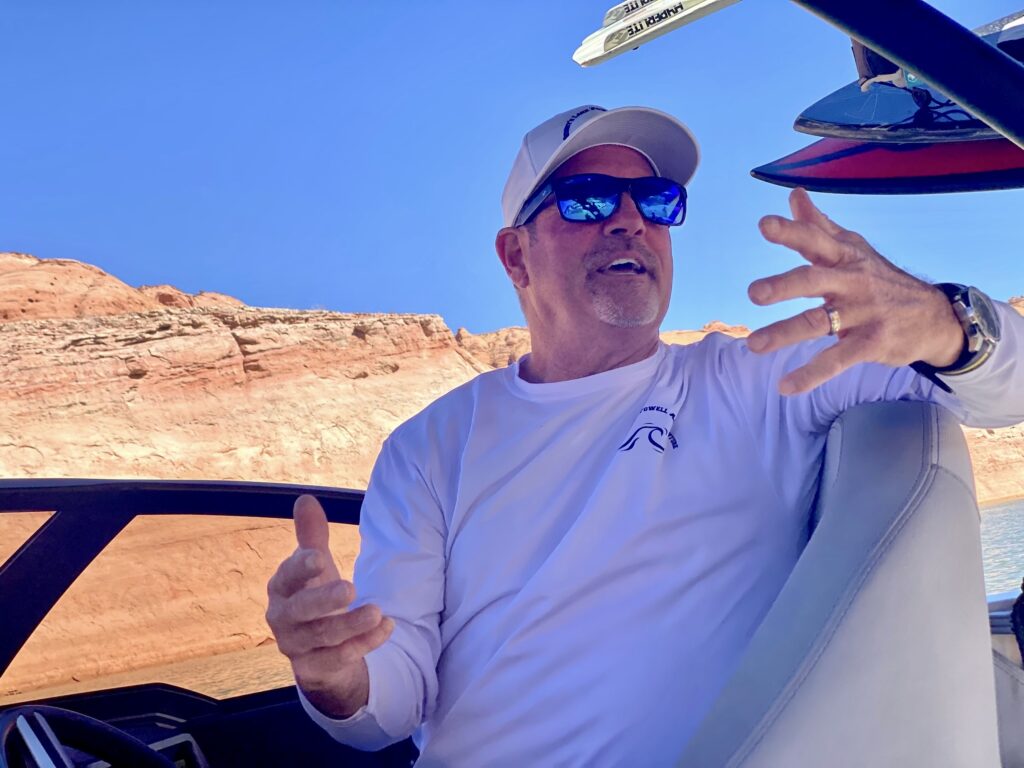
Randy had intimate knowledge of the lake and its many dazzling secrets. He knew a fair amount about the history of the place, but he freely admitted that when he first came to Page the lake was already more than half full, so he never experienced it in its pre-industrial state. In other words, he never knew Glen Canyon; he knows only Lake Powell. He is aware of the Edward Abbey–David Brower position, that it was a tragic mistake to flood Glen Canyon, and he has some respect for that position. But Lake Powell is now a fact of life. Tens of millions of people depend on it. About 35-40 million people downstream in Arizona and California and Mexico. There is no turning back. Maybe the case can be made that the dam should never have been built, but we don’t have the luxury of considering an alternative. The only position that bothers him is the naïve insistence, by a few, that the dam should be dismantled and if that means that Phoenix and Tucson have to depopulate, well, too bad. Whatever your position on decisions made half a century ago at another time in what in some ways was another America, if you don’t acknowledge that Lake Powell is astonishingly beautiful, you just aren’t telling the truth.
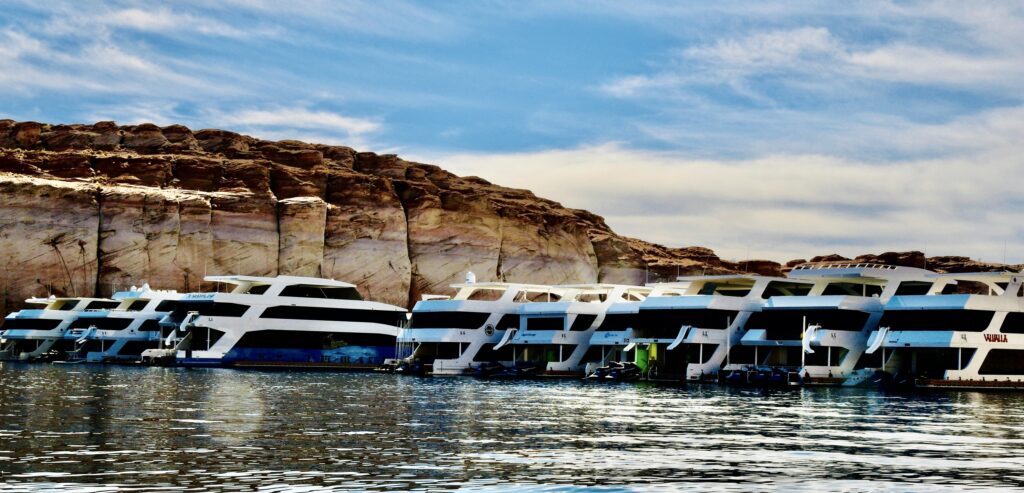
I want to disagree, but I cannot. If it weren’t for this water initiative we’ve undertaken, I doubt that I would ever have floated on Lake Powell, certainly not in a power boat. But here we were, and we were having a great time with a really good guy on a great day on a fabulous lake, which, thanks to the earliness of the recreation season, we had more or less to ourselves. Millions of Americans love Lake Powell. If Glen Canyon had never been inundated, given the popularity of Colorado River river trips, surely thousands would float “natural” Glen Canyon every year, perhaps hundreds of thousands. “Industrial” Lake Powell draws more than 2 million visitors per year and brings several billion dollars to the local economy. Most of them visit the lake by way of the internal combustion engine. We saw a few kayakers on side canyons. Surely, we could have spared Glen Canyon, but we didn’t and the result is not merely a water and power engine but what you have to admit is one of the scenic wonders of the world. Like almost every other American, I am addicted to the fruits of modern life as delivered by the military-petroleum-industrial-Costco complex: strawberries in February, private automobiles, air conditioning, flights to London and Athens — such material abundance at affordable prices that we are choking ourselves with stuff — smartphones and home entertainment centers. One of the foundations of our hyper-materialist way of life is Glen Canyon Dam, and — if not that particular dam — dams, highways, canals, shopping malls that come from the same mindset and the same belief that nature can be made to serve human aspirations without a sufficient blowback to cause us to pause and think.
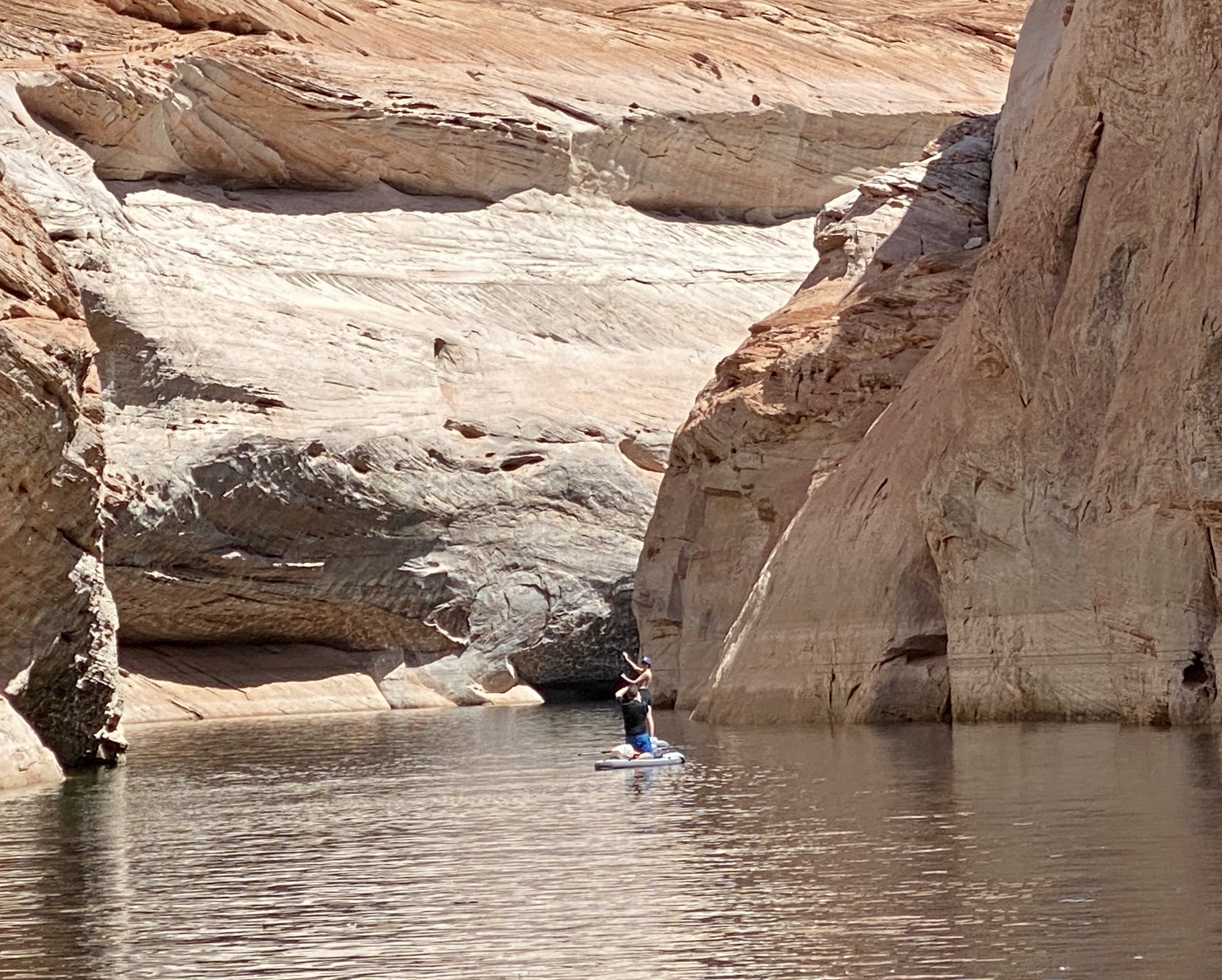
As we churned towards the distant Labyrinth Canyon, a lateral off Lake Powell, we noticed that the boat had a monster sound system. So, we asked Randy how often he was hired for parties. Answer: often. Bachelor parties, family parties, bachelorette parties, business retreats, and a range of other celebrations. He said occasionally people brought along so many coolers of beer and other delights that there was almost no room to move around in the boat. We had brought a few cans of beer which we did not exhaust. When we were stopped in a lovely gentle alcove, alone on Lake Powell, he turned the music system on to give a sense of the power and the fidelity of the system. He gave us merely 10% of what the amp could produce. The music — country western — was not obnoxious per se, but it felt like a desecration in so solemn and beautiful a place. He turned it off and the silence re-enveloped the boat. I tried to imagine the Fourth of July.
We really liked Randy. He was rational, knowledgeable, and never peevish about dam detractors. He provides a service at a very high level of competence and customer satisfaction. We could not have been better taken care of. And we had a really great time.
Eventually he brought us back to the dock and we got our only exercise of the day by climbing up the long hill to the parking lot.
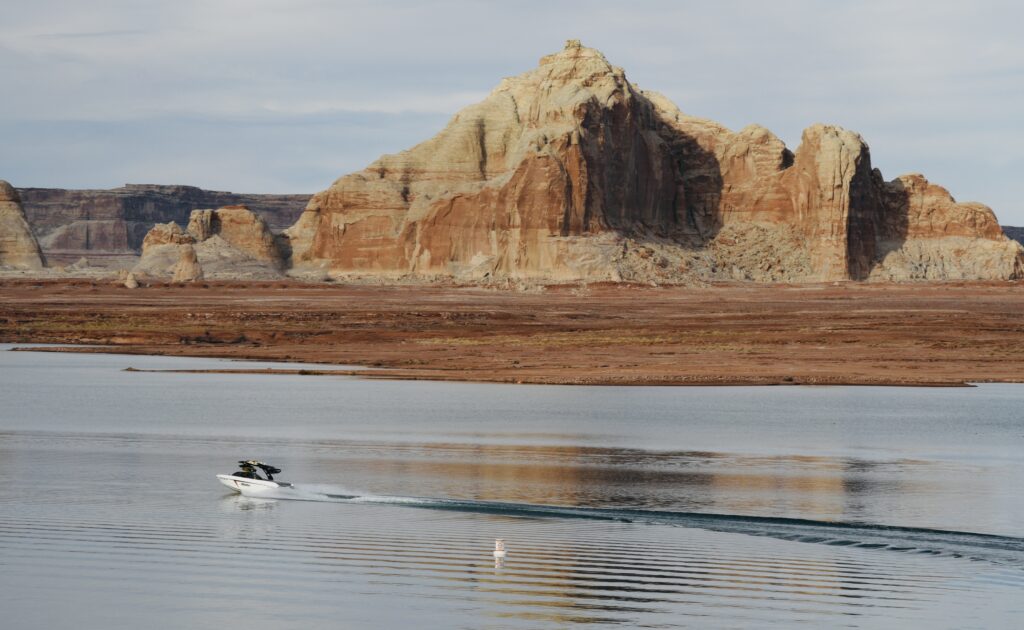
A Fabulous Italian Dinner at a Wonderful French Restaurant in Kanab, Utah.
We drove to Kanab after our excursion on Lake Powell mostly because we did not want a second night in Page, and because we heard from Randy that there is an excellent French restaurant there, Vermillion 45. What? This is the weirdness of desert country. Mostly what you get to eat in this vast region is grub — good grub — but scattered here and there are gems of restaurants that appear to operate more from love than profit. We are running a bit late but there is no way we are going to forego a French restaurant, so we let Google take us directly there.
We are seated next to a long table of more than a dozen Ukrainian women. Frank tries to do his magic with them, tells them in broken Serbo-Croatian that he knew Marshal Tito and once flew sorties over Sarajevo (or something), but they want nothing to do with us. In the end, Frank and I order Pasta alla Norcina, Dennis, Bolognese, none of these French (hey, we’d be happy with an Italian restaurant anywhere in canyon country). We drink good wine. We talk about the paradox of Lake Powell: problematic in so many ways and yet absolutely stunning. The Ukraine girls really knocked us out. We wondered what brought them into the southwest of America and we wondered about the burden of being Ukrainians in 2023.
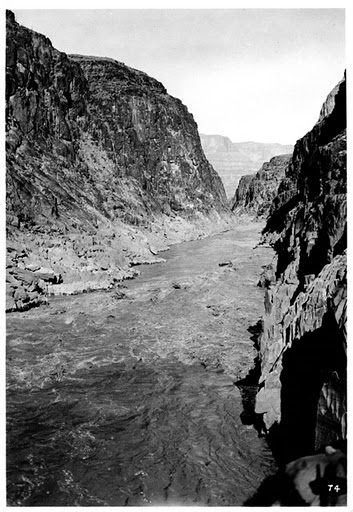
This is as close as we are going to get this trip to the north rim of the Grand Canyon. I have never been there. We’re about 60 miles from the river. We are only a couple of miles from the Kanab-Paiute Indian Reservation. That makes me think of John Wesley Powell, who studied the Paiute more than any other people of the plateau and the Great Basin. After dinner, in a comfortable bed with high quality sheets (my criterion for travel), because, as Powell famously said, “the excitement of the day has not yet worn off,” I remember that the three members of the 1869 expedition who left at Separation Rapids — William Dunn, Oramel and Seneca Howland — and scrambled up the north rim to strike out for some Mormon settlement, were killed by Shivwits Indians. Nobody knows quite where that happened, but almost certainly their death came between Kanab and the canyon. I wish we had time to spend a whole day wandering around trying to pick up that vibe. Powell returned to the north rim country the following year to investigate the death of those three men, whom he loved despite everything. He discovered, at least to his own satisfaction, that they had been killed by Shivwits, who blamed them for the molestation and murder of a woman of their tribe. Powell made friends with the Shivwits and let the matter drop. He was certain that Dunn and the Howlands were incapable of such a crime.
Editor’s Note: You can track Clay’s dispatches on this Colorado River Journey by following the links from his route and itinerary below. You can also keep up with all LTA’s dispatches, essays, photos, and podcasts on this topic through the tab “Water in the West.” This is one of many ongoing road trips at the heart of Listening to America. Our mission is to “light out for the territories,” traveling less visited byways and taking time to see this immense, extraordinary country with fresh eyes while listening to the many voices of America’s past, present, and future.
Water in the West — Routes and Itinerary
- Introduction: A Colorado River Journey, The Trek Begins.
- Day One, Friday: I-70 Vail to Green River; Utah 24 to Torrey; Utah 12 to Boulder, Utah.
- Day Two, Saturday: Boulder, Utah.
- Day Three, Sunday: Utah 12 to Torrey; Utah 24 to Hanksville; Utah 95 to Natural Bridges National Monument; Utah 261 to Mexican Hat; U.S. 163 to Bluff; Utah 162 to Aneth; Indian Route 5068/Arizona County Road G to Cortez.
- Day Four, Monday: Crow Canyon Archaeological Center, Cortez, Colorado.
- Day Five, Tuesday: Colorado 160/491 to Chimney Rock; Colorado 160 to Teec Nos Pos; Colorado 160 to Mexican Water; U.S. 191 Tsaile; Arizona 64 to Chinle.
- Day Six, Wednesday: Canyon de Chelly; U.S. 191 to Burnside; Arizona 264 to Second Mesa.
- Day Seven, Thursday: Hopi Cultural Center; Arizona 264 to Tuba City; U.S. 160 to U.S. 89; U.S. 89 to Bitter Springs; U.S. 89A to Marble Canyon.
- Day Eight, Friday: U.S. 89A to Bitter Springs; U.S. 89 to Page, Arizona.
- Day Nine, Saturday: Lake Powell; U.S. 89 to Kanab.
- Days 10 & 11, Sunday/Monday: U.S. 89 to Utah 20; Utah 20 to I-15; I-15 to Salt Lake City.
- Days 12 & 13, Tuesday/Wednesday: Salt Lake City.
- Reflections on A Colorado River Journey.
